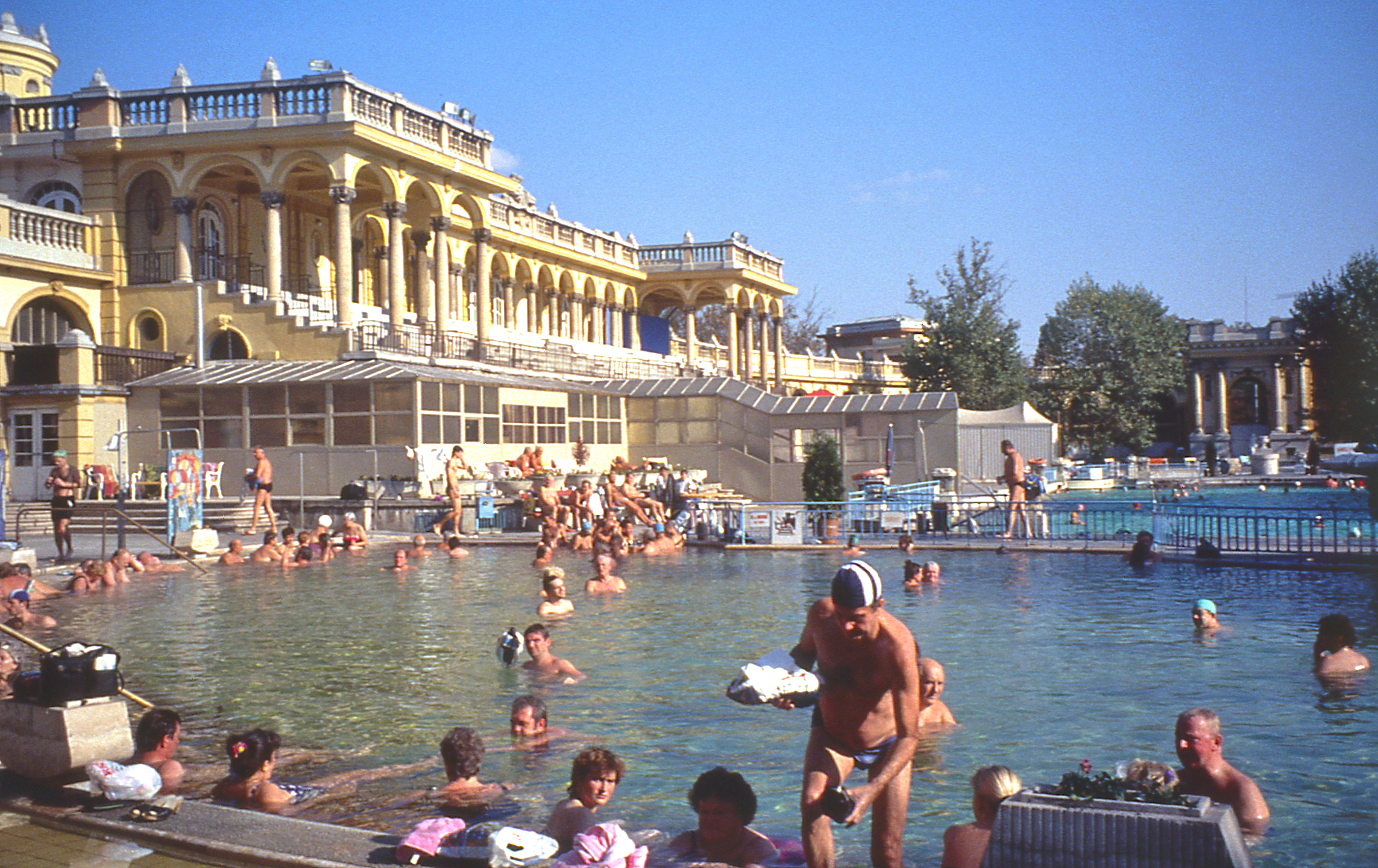Other cities may draw visitors for their shops, cuisine and culture but Budapest has a more therapeutic attraction. Located over mineral-rich springs and divided in two by the River Danube, the Hungarian capital boasts a bevy of spa baths and tourists are welcome to join locals in the bathing ritual that’s a way of life.
Every weekend hundreds of Hungarians flock to City Park on the Pest side of the city to take the spa waters, savouring the elegant neo-Baroque surroundings of Europe’s largest thermal baths. At the Szechenyi Bath and Spa, not only are there 15 indoor pools but three grand outdoor ones as well. When the weather permits, the open-air baths are a great place to lie back and bask in the 32C pleasure of the spa water.
OVER THE DANUBE
Some locals go to play a leisurely game of chess on giant floating boards while other more energetic souls indulge in the rigours of the full length swimming pool, plus hot medicinal dips, saunas and other blood curdling ‘treatments’.
Over the Danube in the Buda side of the city, the world-famous Gellert Hotel is a different experience again. Once grand, now slightly faded, the Gellert houses the splendidly-ornate Art Nouveau baths. Its spa menu is the same as at Szechenyi – steaming hot baths and saunas – but this time with a roof on.
However, there is more to Budapest than a hot bath. Once the most overlooked of Eastern European cities despite having Imperial attractions to rival Vienna, cheap prices are making Budapest a bargain hunter’s heaven. Successive Post Office City Costs Barometers have rated it Europe’s best value city because prices in restaurants, bars and shops have remained resolutely low. Now the strides made by sterling in 2014 are making it even cheaper city break option.
PAPRIKA-RICH OFFERINGS
Talking of restaurants, visitors need to keep a watch on their waistline when eating out in the city. If the Hungarian goulash – a meaty soup not a stew – and countless other paprika-rich offerings do not extend your waistline an inch or more, then the fine cakes and pastries will. Try these at Ruszwurm, a tiny baroque cafe near the main tourist sites of hilltop Buda.
Follow in the footsteps of Margaret Thatcher on a visit to Vasarcsarnok, Budapest’s oldest and largest food market. When Mrs Thatcher visited in 1984 word has it she was so impressed by the paprika on sale that our former Prime Minister bought back a stash of the spice for her well-stocked larder. Check before buying though as paprika comes in a range of strengths – some so hot as to blow the heads off most westerners.
Travelling around Budapest is also cheap and an enjoyable way to see the sights. Aside from an excellent tram network, there’s Europe’s first metro, now renovated to its former glory, and a funicular railway that links Buda with Pest via the Chain Bridge, one of eight straddling the Danube.
In hilly Buda the sights include the medieval Castle District with its imposing Royal Palace, the 700 year-old St. Matthias Cathedral and the seven turreted-terrace of Fishermen’s Bastion, the place to go for unsurpassed city views. The whole Castle District is a UNESCO World Heritage Site and Budapest at its most historic.
Over in Pest the best place to start is Heroes Square. This is the city’s most impressive square with two major galleries – the Museum of Fine Arts and the contemporary art Kunsthalle – and the Millennium Monument commemorating the 1000-year history of the Magyars. Leading from the square is Andrassy Avenue, which has been modelled on the Champs-Elysées. This elegant 19th century boulevard boasts some of the city’s most splendid architecture and buildings, not least the Italianate-style State Opera House.
Every trip to Budapest should include a visit to the opera. Still state subsidised, there are two opera houses where good tickets are available for as little as £4 per head – and you do not have to be an opera buff to enjoy the music. At the Erkel operettas like The Gypsy Baron and The Student Prince have more in common with the London Palladium than Covent Garden. Guided tours of the State Opera House are also available and the history is almost as interesting as the music itself.
But if it is retail therapy that you want, head for the pedestrianised Váci Utca. This is the place to pick up local goods such as Tokaji, Hungary’s most famous wine, handmade folk-art, embroidered linens and porcelain.
